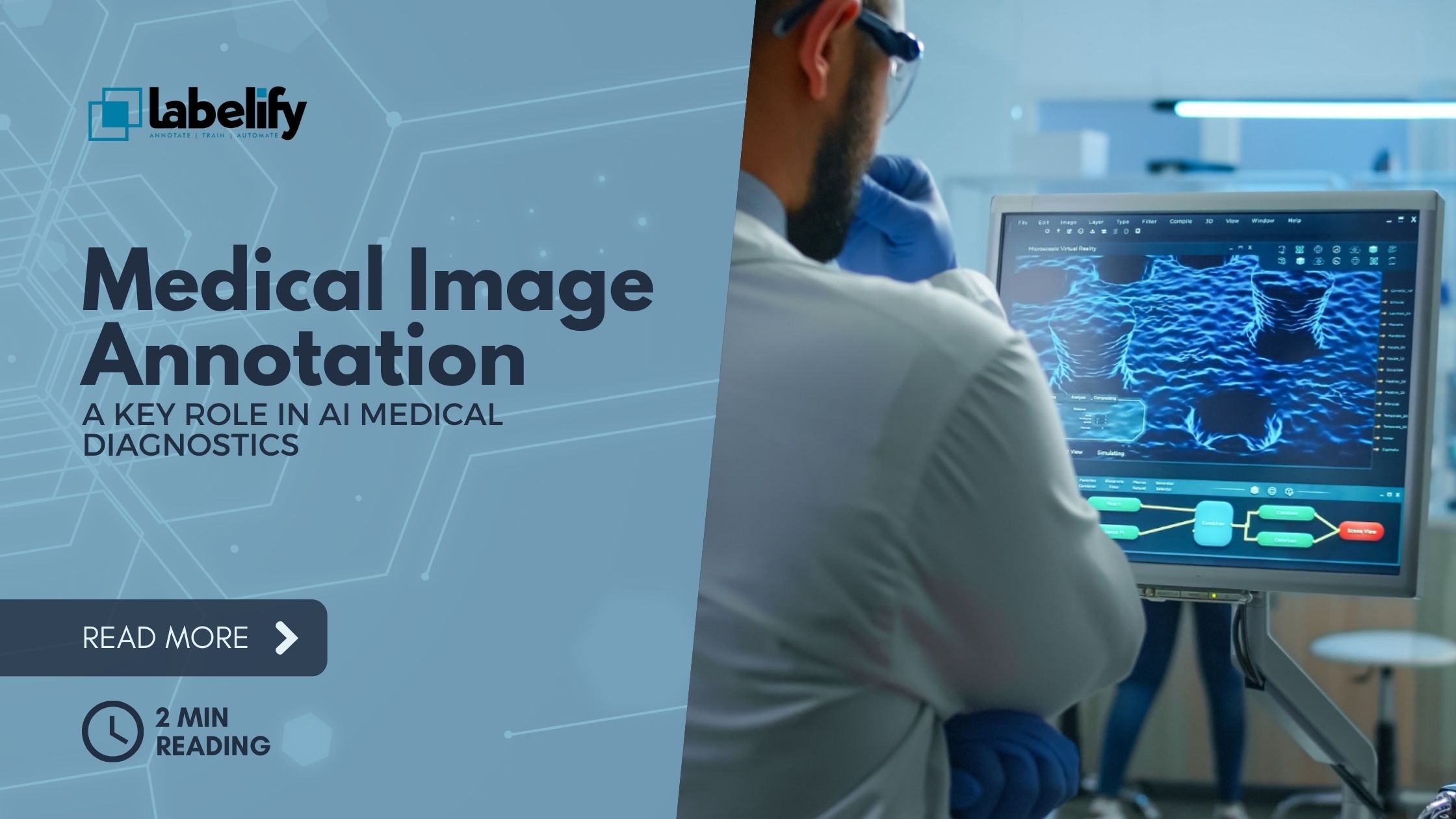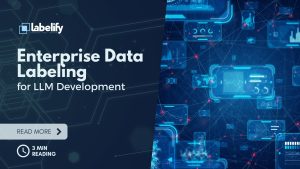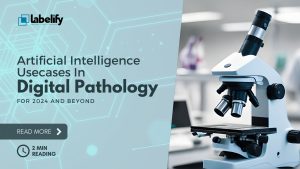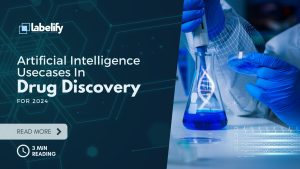Table of Contents
Medical Image Annotation: A Key Role in AI Medical Diagnostics
AI in healthcare is more common with the development of more efficient computer vision-based machine learning models.
With the machine learning algorithm, more training data will be used. This will allow the AI model to learn more variants and make it easier for healthcare professionals to predict outcomes with greater accuracy.
Annotated medical images can be used to detect diseases or other ailments through machines to make the training data more useful and productive. Annotating medical images is a process that creates such data with acceptable accuracy.
What is Medical Image Annotation (MICA)?
Annotating medical images is the act of labeling medical imaging data such as Ultrasound, MRI and CT Scan. Machine learning training.
These radiologist images are not the only ones. Other medical records in text format can also be annotated to make them understandable for machines using deep learning algorithms to predict accurately.
Annotating medical images is a key part of the healthcare industry. We will now discuss the role and importance of this annotation. What are the different types of medical images that can be annotated in order to create training data sets for each disease?
Role of Medical Image Annotation for AI Medical Diagnostics
Annotating medical images is a key component in diagnosing various diseases using AI-enabled machines, devices and computers.
This process actually provides the data to the learning algorithms. The model can then be used to detect diseases in similar medical images.
Medical image annotation is able to detect a variety of diseases, from cancerous disease like leukemia to normal bone fractures.
You can see here which types of diagnoses or diseases AI has performed in medical imaging diagnostics. This was possible through the use of data from medical image annotation.
Diagnose Brain Disorders
Annotating medical images is used to diagnose the disease, including brain tumors, blood clotting or other neurological disorders. Machine learning models can detect these diseases using the CT Scan and MRI if they are well trained with annotated images.
AI in neuro-imaging is possible when brain injuries or other conditions are correctly annotated. This feeds into the machine learning algorithm to make the correct prediction.
Once the model is trained, it can be used in the place of a radiologist to provide better and more efficient medical image diagnosis processes. This saves the radiologist time and effort when making other decisions.
Diagnose Liver Problems
The medical professionals who use the ultrasound images and other medical imaging formats to diagnose liver problems or complications are able to identify them.
Doctors usually detect, characterize and monitor diseases visually by looking at liver medical images. In some cases, his personal experience and inaccuracy can cause him to be biased.
Medical image annotation can be used to train the AI model to recognize imaging information automatically, rather than qualitative reasoning that would lead to more precise and reproducible imaging diagnosis.
How to detect Kidney Stones
Similar problems can also affect the kidneys, such as infection or stone.
Although AI in kidney disease is not yet significant, it is currently focusing on key aspects such as Alerting systems and Diagnostic assistance, Guiding treatment, Evaluating prognosis, and Guiding treatment.
The algorithms can even diagnose kidney failure if they have the correct annotated data sets.
Other than bounding box annotation, many other medical image annotation techniques are used to annotate images. This makes it possible to detect the kidneys related to different problems.
The detection of cancer cells
AI-enabled machines are helping to detect cancers and save lives. If cancer is not caught early, it can become incurable and take a long time to heal.
Globally, breast cancer and prostate cancer are two of the most common cancers. Both can be found in both men and women.
AI models can now be trained with medical image annotation to help machine learning models learn from such data to predict the condition of cancer-related maladies.
Teeth Segmentation for Dental Analysis
AI-enabled devices can help diagnose gum or tooth problems. AI can detect many oral issues, including tooth structure.
Yes, ML algorithms can recognize patterns from high-quality training data sets and store them in virtual memory for future reference.
Annotating medical images can be used as training data for AI in Dentistry. The model will learn from both quantitative and qualitative data. This will allow for better accuracy in machine learning to analyze dental images.
Analyse of Eye Cells
Retinal images can be used to scan the eyes and detect various conditions, such as cataracts or ocular disease.
All of these symptoms can be identified using the correct techniques to diagnose the disease.
Microscopic Analysis of Cells
The microscopic cells are difficult to see with normal human eyes. However, the microscope can help you to easily see them.
To make these very small cells easily recognizable by machines, a high-quality image annotation technique must be used for model development.
These images of microscopic cells can be enlarged on a larger computer screen and annotated using advanced tools and techniques.
The images are annotated at the highest level of accuracy to ensure that the AI in healthcare can produce precise results. Our experts can label microscopic cells from which diseases are detected and analysed.
Diagnostic Imaging Analysis
Diagnostic imaging such as MRI, CT and CT scans are a better way to see the disease and determine the best treatment.
The image annotation team’s experts can create imaging and label specific diseases using a variety of annotation techniques.
Annotating medical images in radiology is giving AI in radiology a new dimension. There are a lot of label data to help with the machine learning process.
Annotated images are required for supervised machine-learning.
Documentation for Medical Records
Medical image annotation also includes text files, which are used to make the data easily recognizable to the machine. The data in medical records can be used to train machine learning models by providing information about patients and their health. Machine learning development can be made easier by annotating medical records with precise metadata and text annotation. These documents can be labeled by highly skilled annotators with high accuracy and confidentiality.
Types of documents annotated with Medical Image Annotation
- X-Rays
- CT Scan
- MRI
- Ultrasound
- DICOM
- NIFTI
AI medical diagnostics companies require a lot of data in order to annotate sensitive documents with acceptable accuracy.
Labelify provides the best medical image annotation service. It can annotate medical images for AI in healthcare. It can annotate radiology images of great detail.
Labelify is a powerful platform that allows you to create a large number of AI training data sets in different industries and sectors.
High-quality data can be obtained here for AI companies looking to develop machine learning in wide-ranging areas like healthcare, retail and agriculture.




